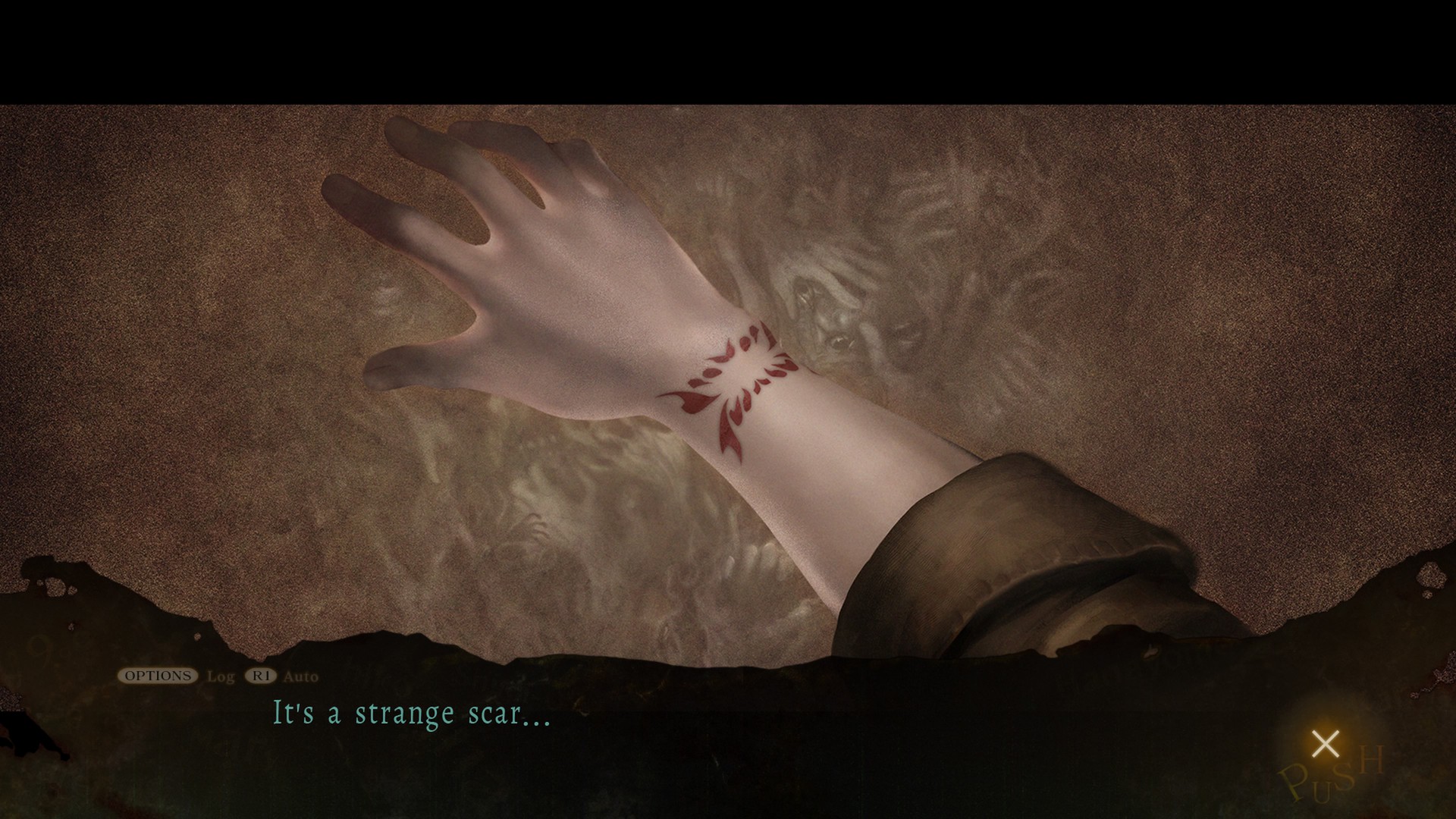Horror VNs – Genre Deep Dive
This is a condensed version of the full article which can be found on my Main Blog Here.
There Is Something Behind You
Genres define the games they inhabit and how the game uses its unique features to achieve or subvert the expectations of the audience. This is especially true for horror which aims to invoke feelings in the player that many other genres deliberately steer clear of. As such it is an excellent candidate to begin to observe how visual novels adapt themselves to accommodate and play to the strengths of a specific genre. When a developer sets out to make a horror game they are shaping their game into a framework with the aim of creating fear and dread in the player. This is an extremely narrow set of priorities which often leads to creative use of assets and ideas, but also restricts what a game has access to in terms of standard motifs since it is highly incompatible with other genres. Visual novels are by nature a medium of limited means of expression while still being extremely flexible and has lead them to have an odd relationship with horror. Let’s dive in and find out exactly how the bond between them manifests.
Less Is More In Horror And VNs

The strongest bond between horror and visual novels is their understanding that less is more when it comes to narrative and presentation. For horror this is about not giving away too much information in order to insure that the source of the fear and dread does not become a known quantity and thus familiar to the player. By contrast visual novels lean into this narrative style more out of necessity due to the limitations of the medium and the need to keep the pace of story up while making the most out of the assets available in creative ways. Regardless of their differing reasons for this choice, it makes for an excellent pairing with horror which is able to cleanly achieve its aims and not put a burden on the resources of the visual novel. Perhaps the most iconic example of this common trait is the original Higurashi. This title had a very limited budget to work with resulting in the creator having to make all the artwork himself and splitting the overall narrative into a series of shorter visual novels. However, these apparent shortcomings were in fact strengths for the horror focus of the game. They prevented the source of the fear from becoming an easily identifiable element through the odd style of the artwork, and limited nature of its implementation does as much for obscuring the truth as the narrative. While other horror visual novels might not practice this technique to the extremes of Higurashi, they nevertheless lean into it for both budgetary and artistic reasons to help form the desired dread in the player.
Monster Of The Week

When it comes to structural elements, there is one type which both horror and visual novels love for longer form storytelling and this is the episodic format. The most common manifestation of this format for horror visual novels is a monster of the week style where the threats facing the characters changes regularly to keep the player on the edge of their seat. By not sticking to a single monster the game can preserve the overall sense of the unknown since it can discard an individual threat the moment the player no longer feels fear from them. It also allows for the build up of a greater and insidious final antagonist to act as a capstone for the game through an escalation of the dangers facing the characters, thus making the entity responsible for all the previous monsters come across as particularly threatening.
The Death Mark games showcase this compatibility through the various ghosts and ghouls the developers based their episodes around and the way in which the visual novel format complements this approach. Each self contained segment has its own mystery and mechanical puzzles to complement the associated monster and provide a pacing tool through which the game uses to control the build up and release of tension. This is important as for a game of Death Mark’s length as it cannot keep a constant tension otherwise it will wear out the player and cause them to want to stop playing the game. So the solution Death Mark hits upon is to simulate the highs and lows of an overall horror experience on a smaller scale to give space to breathe and generate excitement for what is coming next. It is the also a great pacing tool utilised by visual novels in general to make break their longer games into manageable chunks, leading to them slotting nicely alongside horror.
Control Over Information
One particular sub-genre of horror which does not adhere to the episodic format is Denpa, a genre where controlling the player’s access to information is critical to the effectiveness of its fear. Given the limited means visual novels have of presenting the player with information, they are capable of providing a developer with precise control over what is know, while still offering the option to drop hints and create striking moments. This might be through the use of specific character portrait placement, subtle audio cues or the clever narrative moments. There are a surprising number of avenues to rely ideas down but these have limitation on the amount which can be conveyed at once and this sets the player’s expectations for what they are witnessing.
Together these are excellent tools to sow doubt in the player's mind and invoke a paranoid state in them that is the hall mark of Denpa. Soundless - A MODERN SALEM IN REMOTE AREA – is a good example of how compatible Denpa horror and visual novels are at their core. The overall aim of Soundless is to create a sense of claustrophobia and doubt the game can channel into making the player question everything as events decay into a whirlpool of madness. To do this, the game establishes a status quo through a set of symbols and sounds that meet the player’s expectations while subtly cueing them in that something is not right, but never allowing them to put their finger on what it is. Thus when events start to slip into an uncontrolled descent, the player cannot tell if the protagonist is a reliable narrator to events given how off they can be at times, but still having to grapple with them as their only source of information. The restricted space to understand what is happening provided by the limitations of the visual novel medium ensure the player will always be in the palm of the developer’s hand and experience the desired dread.

Conclusion
Horror, just like humour, varies by person, some find grotesque monsters scary while others find the unknown a source of dread. Regardless of what type of horror experience is desired, visual novels offer a flexible environment to create an emotional roller-coaster for the player. Their compatibility with horror is founded in a fundamental commonality with how the two approach their structure and execution. From an emphasis on a limited means of presenting ideas, to an episodic centric approach to long form stories, to an ability to create gaps into which the player can project their own monsters. Together they can create games and narratives which would not be possible in other mediums due to their more expansive tool sets and differing player expectations. Horror is a genre defined by its ability to make something from very little material and visual novels understand this approach in a way nothing else can hope to match.
- fujoneko and Plk_Lesiak
-
 1
1
-
 1
1



0 Comments
Recommended Comments
There are no comments to display.